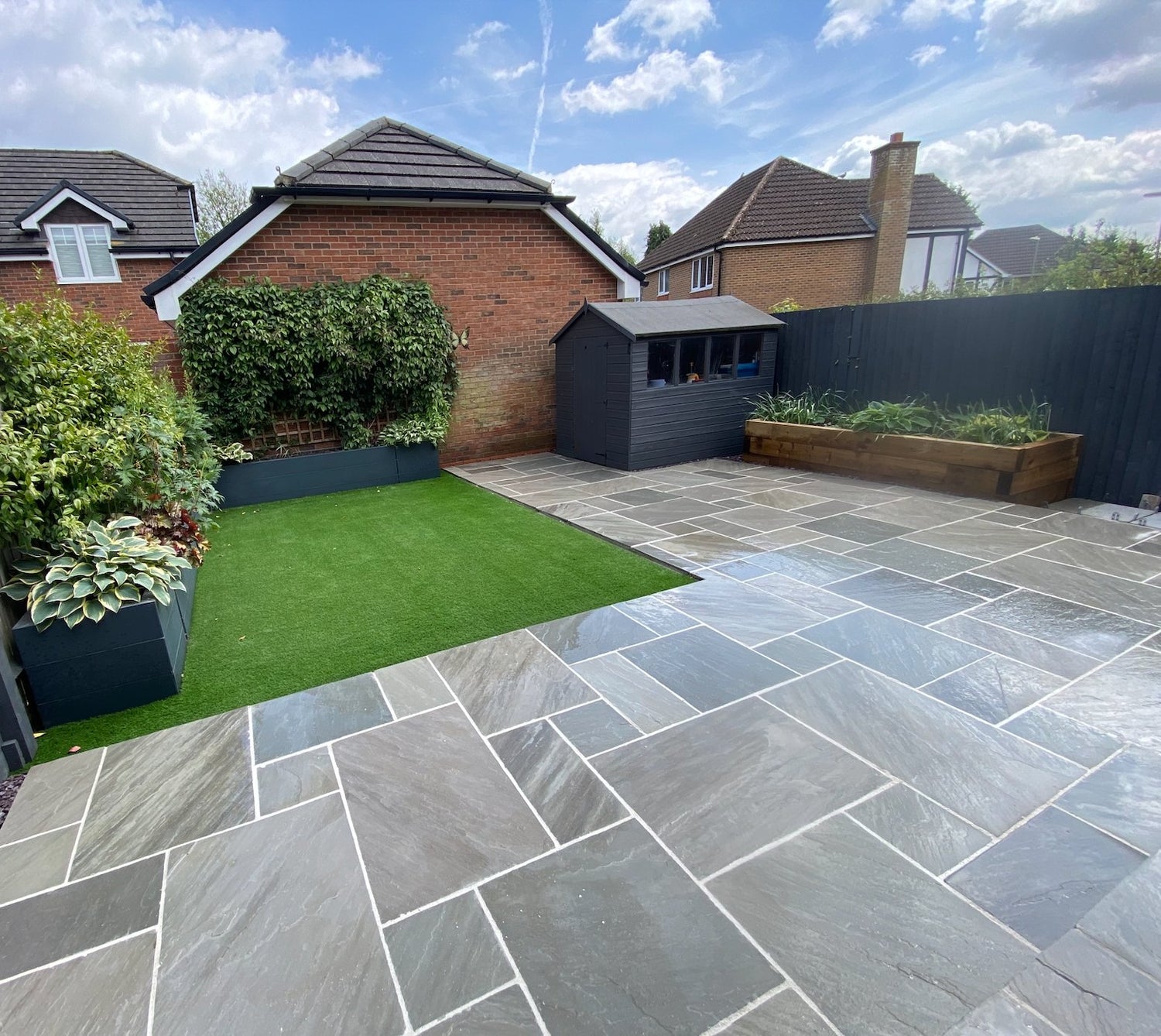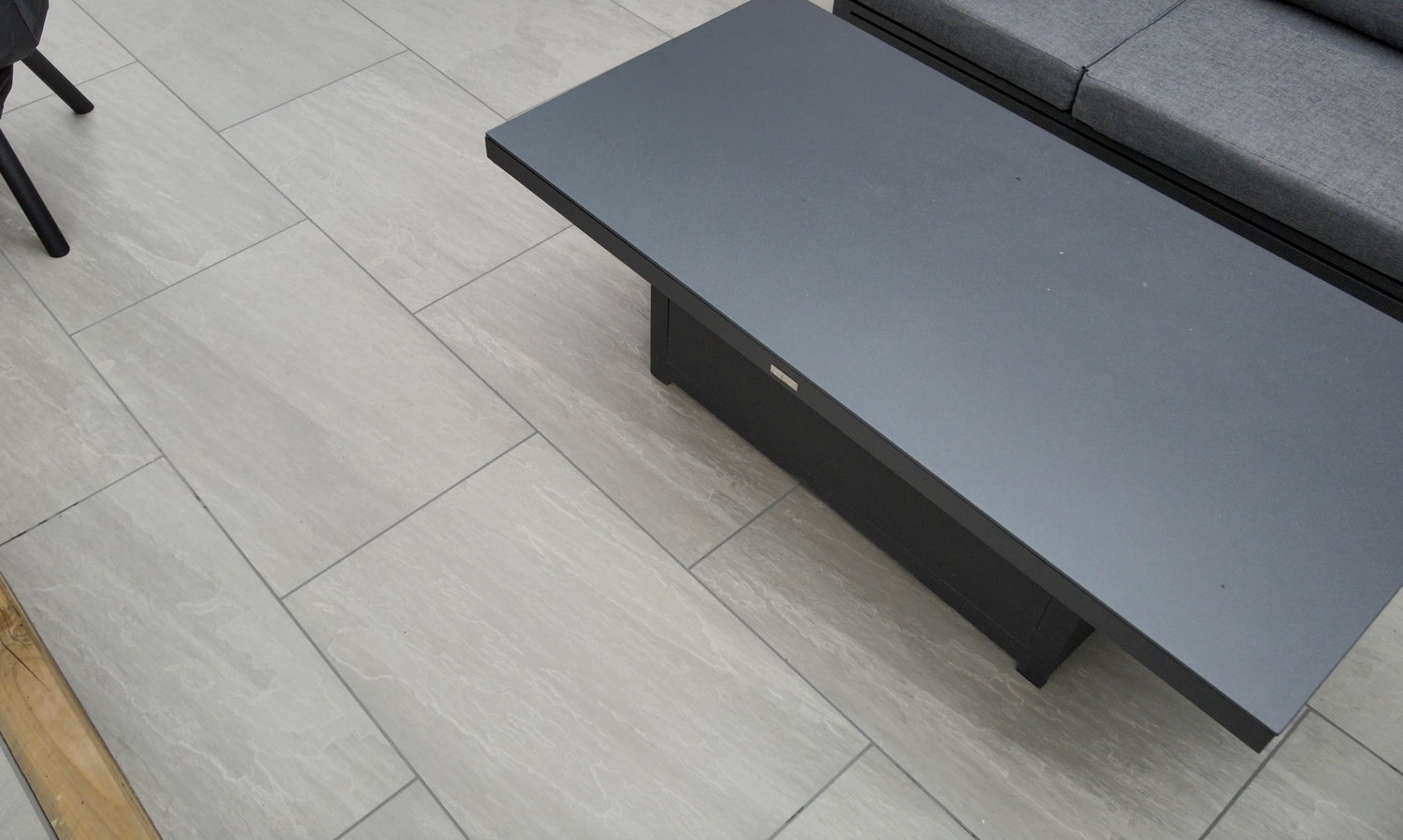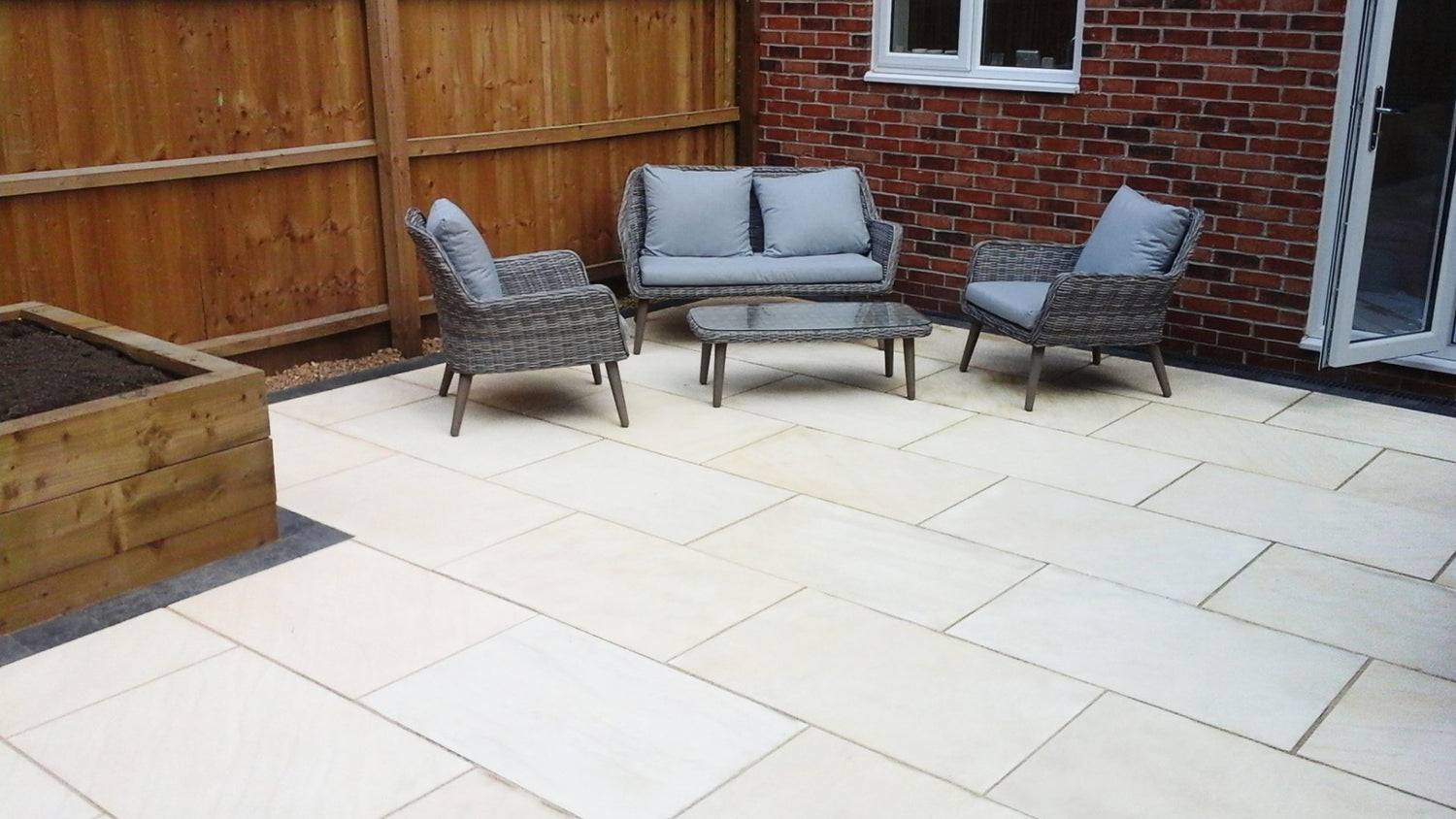
Where Does Natural Sandstone Paving Come From?
Share
Sandstone begins deep underground, formed over eras as minerals and sediments fused under pressure. Powerful forces of wind and water eroded ancient mountains, with their remnants accumulating through the ages. Over long stretches of geological time, these massive deposits solidified into stone. But how do strong yet elegantly grained blocks emerge from their resting places? Where does the journey begin for sandstone destined to enhance homes and buildings worldwide?
How Is Sandstone Extracted From Quarries?
Quarries across India supply premium sandstone to global builders and landscapers. Careful selection of sites balances critical factors: chemical composition indicating durability, natural aesthetic variations like ripples or fossils that showcase a formation’s uniqueness, estimated yields for long-term production capacity, and ethical mining practices to protect local ecosystems and quarry workers. But what methods actually extract the stones from these sites?
Specialised heavy equipment and expert teams work in sync to harvest stone from the quarry walls. Hydraulic excavators-tip precision chisels against natural cracks and seams in the surface, striking strategically to leverage physics and dislodge blocks weighing many tons. The massive extracted pieces then make their way to processing, destined to become one-of-a-kind pavers. Efficiency steers each phase, as crews maximize usable stone from the quarry while minimising dangerous waste.
Where Do the Raw Stone Blocks Go Next?
Enormous blocks trucked from Indian quarries transform into polished pavers at specialized facilities. Diamonds may be a girl’s best friend, but diamond-edged saws are a sandstone slab’s greatest ally. These gangs of giant blades can sculpt a 10-ton giant into refined flooring in a matter of hours. How exactly does rough stone become a refined fixture?
The mega-blocks anchor firmly in place so diamond saws can work their magic cutting the sandstone. Programmable gang saws first shear away massive sides and tops to form a basic shape. Although sandstone’s compression strength compares to concrete, diamonds easily best this sedimentary giant. More precise saws then cut calibrated measurements; uniform thicknesses for level installation. Finally, specialized saws carve any custom designs like curves, bevels, or decorative edges.
What Finishing Steps Complete the Signature Sandstone Look?
Shaping the rough brick to standardized sizes completes just part of a paver’s journey. Carefully refining the edges and applying finishes unlock each stone’s unique potential. But what methods bring out sandstone’s best qualities?
Whether aiming for a modern vibe or vintage charm, sandstone’s workability accommodates multiple textures. Skilled masons perfect techniques passed down through generations. They chip sides with traditional hand tools for irregular contours reminiscent of naturally weathered stone. Tumbled finishing bathes bricks in water and abrasives. As the batch rotates in drums for days, collisions gradually soften rigid edges. Precisely calibrated cuts retain sharp angles and smooth faces mirroring quality processed goods. Sealing completes certain pavers, enhancing weather resistance and intensifying natural colours. These meticulous finishing touches complete the transformation.
What Makes Indian Sandstone a Popular Paving Choice?
Pavers from India elevate spaces across the world for good reason, with their Indian Sandstone Paving. Attractive sandstone paving colours and textures blend seamlessly into any design vision. Balancing durability with easy maintenance, sandstone brings long-lasting quality within reach. On top of this Indian Sandstone paving is permeable, allowing it to absorb rain water. Moreover, its smooth yet slip-resistant surface qualifies it as dog-friendly paving, making it an excellent choice for pet owners. What final benefits solidify sandstone pavers as a premier choice?
What Are Some Popular Indian Sandstone Paving Types?
With India's vast sandstone deposits displaying stunning diversity, numerous distinctive varieties make ideal pavers. Which options suit different aesthetic visions? You can check ou this post to view some ideas for patios and paving.
Kandla Grey Sandstone: Quarried in the Kandla region of western India, this variety exhibits a cool dove grey tone. Occasional darker gray striations add depth to the neutral canvas. The elegant colouration blends seamlessly into modern or contemporary landscaping. Its density and longevity also make Kandla Grey sandstone well-suited for driveways and high-traffic zones. With understated beauty belying its ruggedness, Kandla Grey sandstone brings quiet sophistication to outdoor spaces.
Modak Sandstone: This extremely dense stone with tight grains comes primarily in attractive golden brown, yellow, black, and red/brown blends. The durability and scratch resistance ensure enduring quality.
Smooth Sandstone: Smooth texture and uniform appearance offer versatile styling.
Mint Fossil Sandstone: Fossilized impressions scattered across a muted gray/green base color create intriguing depth. The fossils' organic shapes craft a timeless aesthetic.
Camel Sandstone: As the name suggests, weathered beige camels seem to have traversed this stone eons ago based on its sandy hue. Excellent slip resistance benefits outdoor installation.

Ivory Sandstone: A pale creamy ivory backed by light gray echoes fine marble without the fragility or price. Glamorous neutrality pairs with any landscape colour.
Sandstone trends may come and go, but selections like these remain sought-after for balancing aesthetics, economics, and durability. With thoughtful finishing applied to the raw stone’s inherent qualities, the pure uniqueness of Indian sandstone perseveres, bringing personal landscaping visions to life.
Related Posts
-

UK Garden Statistics and Trends 2024
UK Garden Statistics and Trends 2024 General UK Garden Statistics The vast majority of UK households have access to ...
-

Can I lay Paving on Soil or Mud?
Technically, yes – you can lay paving stones or slabs directly onto exposed topsoil however, laying a sub-base will e...
-

How Much Does a New Patio Cost?
A new patio in the UK typically costs between £80-£150 per square meter. For a 40-50 sqm patio, expect to pay £2,000-...
-

What Different Sizes Do Paving Slabs Come In?
When planning a patio or outdoor paving project, one of the key decisions is choosing the right size paving slabs. ...
-

Can You Pressure Wash Indian Sandstone?
Indian sandstone is a popular choice for outdoor paving due to its durability and attractive appearance. However, li...
-

Is Sandstone Paving Permeable? Is it porous?
Sandstone's porous nature enables it to absorb rainfall, qualifying it as a permeable paving variety. However, seali...
-

5 Paving Ideas for Small Gardens: Maximise Your Outdoor Space
Front of House When considering paving ideas for the front of your house, it's crucial to select ones that complem...
-

9 Paving Ideas for Front of House: Enhancing Curb Appeal with Style
The facade of a house plays a pivotal role in defining its character and curb appeal, and the choice of paving can s...
-

9 Summer Garden Paving Ideas UK
Summer gardens offer a vibrant canvas for homeowners to express their style while enhancing outdoor living spaces. G...
-

8 Garden Paving Ideas for 2024
It's time to refresh your garden's look for 2024 and an easy way to do that is with some new paving. With so many opt...
-

How to remove moss from patio paving
Moss growth is a common issue for patio paving, especially in damp, shaded areas. While moss may seem harmless, it ca...
-

How much does sandstone paving cost?
When choosing new garden pavers, sandstone offers homeowners an enticing middle-ground - more durable than basic conc...
-

Why Do Paving Slabs Crack And How To Repair Them
Seeing cracks appear on your patio or driveway can be disheartening after investing time and money into installing be...
-

How to lay paving in winter (Tips & Tricks)
How Cold Temperatures Impact Paving Projects The primary concern when working in cold weather is ensuring proper curi...
-

Sub Bases For Patios
Building the Perfect Patio Base: A Comprehensive Guide When planning an outdoor living space, understanding proper ba...
-

Pros and Cons of Porcelain Paving
Are you considering adding porcelain paving to your outdoor space? It's important to weigh the pros and cons before ...
-

Understanding Paving Slip Ratings: A Comprehensive Guide
A paving slip rating, also known as a slip resistance or anti-slip rating, is a measure of how slippery a surface...
-

Stunning Garden Water Feature Ideas - Enhance Your Outdoor Space
Garden water features are decorative elements that incorporate water into a garden, adding beauty and a sense of ...
-

How to Stop Weeds in Block Paving: Expert Tips andTricks
Weeds growing between the blocks of your paving can be an unsightly and frustrating problem. Not only do they make y...
-

How to clean paving without a pressure washer
A patio cleaner is a cleaning solution designed specifically for removing dirt, grime, and stains from outdoor patio...
-

How to Grout Paving Slabs – Expert Tips and Techniques
Pointing paving slabs is an important step in the process of installing them. Grout is a mixture of cement, water...
-

Block Paving Guide | What Does it Cost? | How Much Per m2?
Block paving is a versatile and durable option for creating driveways, patios, and paths. This method involves using...
-

Porcelain VS Ceramic Paving
Porcelain paving is non-porous and more durable than ceramic paving, which is more porous and prone to stains and wea...
-

Sandstone V Porcelain Paving - (Style Comparison and Distinctions)
When choosing materials for your patio or driveway, two of the most popular options are sandstone paving slabs and p...
-

Understanding Gradients and Falls for Paving and Drainage (2024)
When it comes to paving and drainage projects, understanding the correct gradients and falls is essential for ensuri...
-
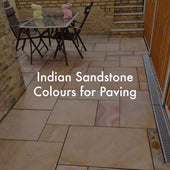
Indian Sandstone Paving Colours for A Patio - A Comprehensive Guide
Indian sandstone is one of the most popular paving materials, celebrated for its natural beauty and the variety of co...
-

Jointing and Pointing For Paving (Sand & Cement Mix)
Patio pointing is important for both looks and durability. It protects the layers under your paving, stops weeds, and...
-

How to Lay Paving on Sand and Cement: Expert Advice and Tips
Paving on Sand and Cement: A Comprehensive Guide When it comes to enhancing your outdoor space, paving is a popular ...
-

Pros and Cons of Sandstone Paving
Pros & Cons of Indian Sandstone Paving Indian sandstone paving is a natural and durable option that adds both bea...
-
Does Patio Paving Need Edging? A Comprehensive Guide
In this article, we'll explore the importance of patio edging, the different types of edging materials available, and...
-

Pet Friendly Paving - What is the best paving for a dog-friendly garden?
Creating a dog-friendly garden requires choosing the right paving materials to ensure your furry friends can enjoy t...
-

Patio Paving Laying Patterns Guide
Paving patterns can transform an ordinary outdoor space into a stunning and eye-catching area that complements your ...
-

Patio Kits vs Single Size Paving Slabs: Which To Choose?
When designing a patio or outdoor space, one crucial decision is whether to use a patio kit (also known as patio pack...
-

Are paving slabs suitable for driveways?
This is a question many homeowners ask when it comes to choosing the right type of driveway surface for their home. T...
-

How much paving do you need to cover your outdoor space?
Planning an outdoor paving project is exciting, but it’s crucial to accurately estimate the amount of paving needed b...
-

What is the Best Paving for Patios?
When it comes to choosing the best paving for patios, there are a variety of factors to consider, such as durability,...
-
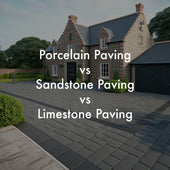
Sandstone v Limestone v Porcelain: The Pros and Cons of Different Garden Paving Materials
Transforming your outdoor space involves choosing the right paving material, and porcelain and sandstone are two of t...
-

Are Paving Slabs Cheaper Than Decking?
Transforming your backyard into the ultimate outdoor oasis can be challenging when choosing between paving slabs or d...
-

How to lay a patio - An expert guide to laying paving slabs and patterns
There are a few things to consider before laying a patio, such as the type of paving stones and the laying pattern. Y...
-

How to cut Sandstone Paving?
When it comes to prepping your garden for a new patio, you may consider different designs that require your paving to...









































